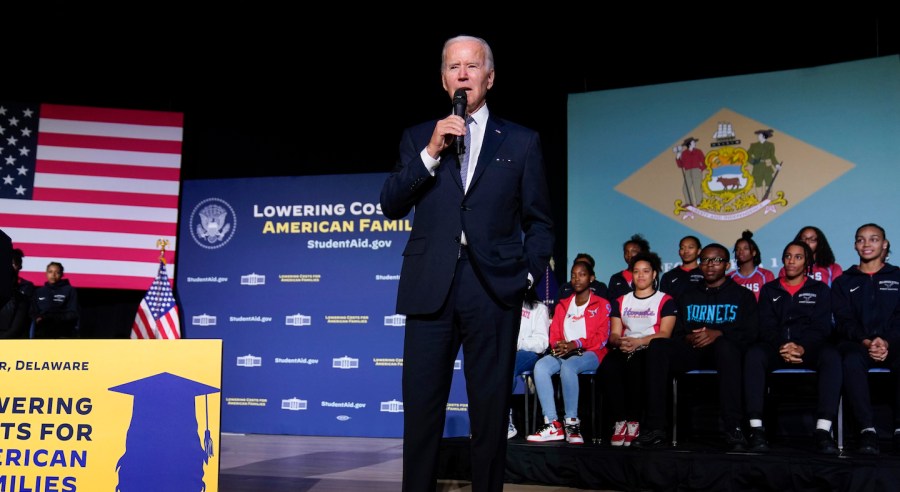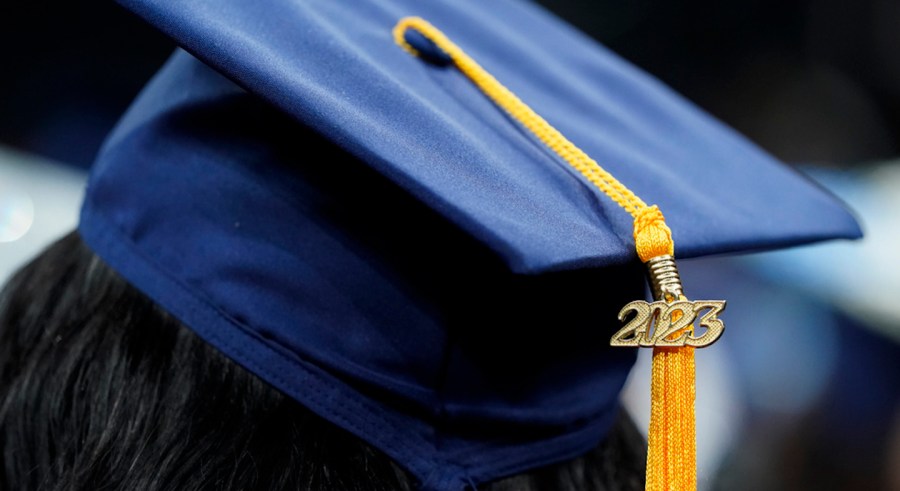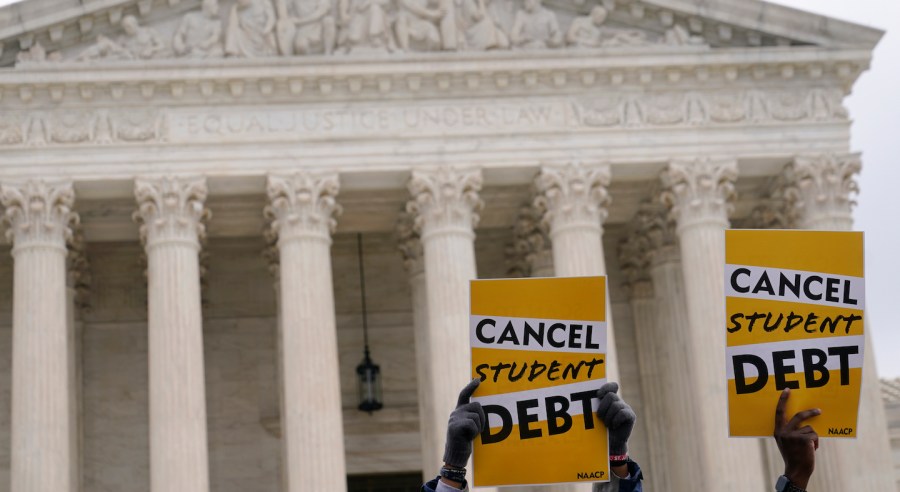Student debt relief: Which way will the Supreme Court go?
The Supreme Court is set to release its decision on President Biden’s relief of up to $20,000 in student loan debt, with advocates and borrowers widely concerned the justices will strike down the plan.
The court holds a strong 6-3 conservative majority that seemed skeptical of the administration’s ability to forgive the debt during oral arguments in February.
But as several recent decisions show, the court sometimes hands down a surprise ruling, offering a sliver of hope to those wanting the forgiveness despite the widespread skepticism.
Court watchers are closely eyeing how the justices rule on whether any of the challengers have legal standing to bring their lawsuits, an issue that the high court’s liberal wing and conservative Justice Amy Coney Barrett in particular probed during oral argument.
The situation has been a whirlwind for borrowers and will, one way or the other, come to an end soon.
Why are borrowers fearful of the decision?

Many experts, and the Biden administration itself, have expressed concern for the outcome at the right-leaning court.
The justices are weighing two separate lawsuits — brought by six GOP-led states and two individual borrowers — and Biden’s plan must survive both.
“I’m confident we’re on the right side of the law. I’m not confident about the outcome of the decision yet,” Biden said in March.
In recent years, the court’s conservatives have increasingly struck down executive branch policies deemed matters of vast economic and political significance, ruling that such policies require clear authorization from Congress.
The debt relief plan could meet a similar fate, as its challengers have cited the major questions doctrine in arguing Congress did not clearly authorize the executive branch to unilaterally forgive hundreds of billions of dollars in debt relief.
“I think most casual observers would say, if you’re going to give up that much amount of money, if you’re going to affect the obligations of that many Americans on a subject that’s of great controversy, they would think that’s something for Congress to act on,” Chief Justice John Roberts said at oral arguments.
Justice Brett Kavanaugh similarly gave caution.
“Some of the biggest mistakes in the court’s history were deferring to assertions of executive emergency power. Some of the finest moments in the court’s history were pushing back against presidential assertions of emergency power,” he said.
Conservatives on the court also noted that the federal provision cited by the Biden administration only authorizes the executive branch to “waive or modify” student financial assistance programs.
“In other provisions, there is express language as to cancellation, and, of course, there isn’t here,” Justice Clarence Thomas said at oral argument.
Justice Samuel Alito repeatedly interrogated the administration on whether the debt relief was fair.
“Why is it fair?” Alito asked. “If it was — if he didn’t have to do it, why is it an answer to say that it was warranted? Maybe it was warranted, but why was it done? I guess you don’t want to answer the question.”
Borrowers cling to hope

It is possible the court greenlights Biden’s plan without ever deciding whether he had authorization.
The Biden administration argues that in both lawsuits, the challengers lack standing, meaning they don’t have the right to sue. But only one of the six GOP-led states or two individual borrowers challenging the debt relief needs standing for the justices to move ahead.
At oral arguments, one of the court’s conservatives joined its liberal wing in seeming to have some qualms about the standing arguments: Justice Amy Coney Barrett.
Barrett intensely questioned the state of Missouri’s attempt to assert standing by dragging into the mix student loan servicer MOHELA, which it says would suffer revenue losses.
Neither side disputes that MOHELA would have standing if it sued Biden itself. However, MOHELA has decided not to involve itself in the case, raising some eyebrows as Missouri now attempts to sue on its behalf.
“If MOHELA is an arm of the state, why didn’t you just strong-arm MOHELA and say, ‘You’ve got to pursue this suit?’” Barrett questioned.
More Education coverage from The Hill
- Borrowers stare down student loan repayments after years of high inflation
- Student loan debt: Borrowers brace for Supreme Court decision
- Supreme Court declines to hear case on charter school dress code
- DeSantis sues Education Department over higher ed accreditation process
All three of the court’s liberals — Sonia Sotomayor, Elena Kagan and Ketanji Brown Jackson — similarly probed the standing argument.
“It’s just very hard for me to say that there is an interest sufficient for the state to speak on behalf of an entity who has a right to sue or be sued,” Sotomayor said.
Jackson added, “I feel like we really do have to be concerned about jumping into the political fray, unless we are prompted to do so by a lawsuit that is brought by someone who has an actual interest. So this is why I’m sort of pressing really hard on the standing point.”
On the merits of the case, Kagan repeatedly suggested Congress did give authorization through the Heroes Act.
“Congress used its voice. Congress used its voice in enacting this piece of legislation. All this business about executive power, I mean, we worry about executive power when Congress hasn’t authorized the use of executive power. Here, Congress has authorized the use of executive power in an emergency situation,” Kagan said.
However, Barrett and the court’s liberals would still need to convince one of the other five justices to join them to form a majority.
It wouldn’t be the first time this year the court has tossed a major case by finding no plaintiff had standing. Last week, the liberal wing and Barrett — as well as four other justices — agreed that two GOP states had no standing to challenge a Biden-era immigration policy, albeit for different reasons.
What will happen after the decision?

Regardless of the court’s decision, borrowers will have to be ready for the three-year student loan payment hiatus to come to an end.
While advocates were hopeful they could get Biden to implement another extension, especially if the court ruled against his relief, the president has locked the door on the option.
During debt ceiling negotiations, Biden and Speaker Kevin McCarthy (R-Calif.) agreed student loan interest would begin to accrue again in September, and payments would restart in October.
Advocates were furious after the announcement and have already hosted multiple rallies calling for Biden to have another plan to forgive student loans if his current one fails at the court.
If the court rules in favor of his plan, it would give a cushion to the president after the agreement and fulfill one of his major campaign promises from 2020.
However, if the court rules against, all eyes will be on the president’s next move.
Copyright 2023 Nexstar Media Inc. All rights reserved. This material may not be published, broadcast, rewritten, or redistributed.

